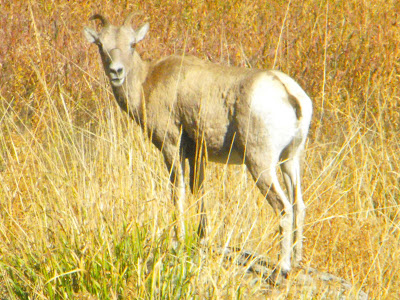Article 1
While reading through the magazine titled
Popular Photography I came across an article called "Above It All". I really enjoyed reading this article, I found it to be very creative and unique, but simple at the same time. The article was of a seventeen year old high school female named Sandy Honig. For a art project she decided to "capture the four seasons as metaphors for stages of life" using her camera. She did this by using some tricky, yet simple techniques.
I mainly enjoy this picture for the usage of nature in the photo, along with the simple and tricky techniques. Sandy's picture is representing fall, which is the season of death. The levitation is symbolizing the individual being sent to a otherworldly place. All of her props included a chair, a Canon EOS Rebel XSi, a Sunpak 6464 tripod, and Adobe Photoshop CS4. Sandy took two different shots and then using Photoshop combined the two layers together.
Sandy chose to use her backyard for the nature shot, which has great lighting through the trees as the sun goes down. The first shot she took with her camera was just of the trees and foliage and the setting sun. Then she went and took another photograph by setting the self timer on her camera, and then setting a chair in the middle of the area, then got into the picture fast and positioned, and then took the picture. Before actually taking the picture she played with the camera, getting the appropriate shutter speed and aperture settings, and getting the correct exposure. Then once she got into Adobe Photoshop CS4 with her photographs she set up just the layer with the foliage, trees, and sunset, and then placed the picture of her laying over the chair on top. Then she erased the chair from the photo revealing the background foliage using the settings on photoshop.
Article 2
Also, while looking through Popular Photography I came across another article titled "Panning Trick". I really enjoyed reading this article because it focused on features of photoshop like we previously discussed in class on Tuesday. The main focus of this article is about working on the main focal point, making that stand out. Then trying to capture the back ground as a somewhat blur. Sometimes however, your main focus point can become blurry too.
I really enjoy this blur technique when you have one main subject that is still in focus. And as long as you can still somewhat tell what is in the background then I believe that the picture will still look appealing. With a few easy steps and tools on Photoshop you can altar the photo and take out, or blur out parts of the photo that you do not want in main focus or not even in the picture at all.
The way to capture a motion blur is by using a Photoshop, preferably Adobe Photoshop CS5. Your going to need to make a background layer of the photograph to work with to start with. You can use the quick select tool in photoshop to move the biker to her own layer so that you can first work with the background. Then you will need to use the paint brush tool to correct any thing that may have been left over on the photo from the woman. Then you will need to choose the Refine Edge tool to sharpen up the tiny details of your picture. Such as sections of the bicycle or the woman or even her umbrella. Then when you are in the background layer then you can use the healing brush to get rid of the remains of the woman on the bicycle with the umbrella. With the background copy still selected you need to go into Layer, Smart Objects, Convert to Smart Object. Then go to filter, blur, and then motion blur. Then you can play with the angle until it looks realistic. This is how you would create a motion blur for your photograph.









